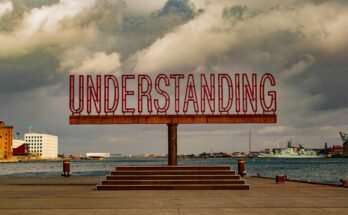Introduction
As 2023 comes to a close, and we look ahead to a new year, many Minnesotans will be shopping for automobile insurance coverage. While getting quotes and comparing rates is an important part of the process, it’s also very important to have a solid understanding of your options so you can choose a policy that truly meets your needs.
Minnesota Minimum Insurance Requirements
All drivers in Minnesota are legally required to have in possession a minimum level of auto insurance coverage. This mandatory minimum protects others on the road in case of an accident for which you are at fault. It does not necessarily provide full protection for your own vehicle or medical expenses.
The minimum coverage amounts are:
Bodily Injury Liability
- $30,000 per person
- $60,000 per accident
Property Damage Liability
- $10,000 per accident
Personal Injury Protection (PIP)
- $40,000 per person
Beyond these state-mandated minimums; drivers can choose to purchase additional optional coverage amounts and types. We’ll explore some popular supplemental coverage options later in this post.
For now, it’s important to understand that simply carrying liability insurance to meet the state minimums does not provide full protection. You remain at risk of paying considerable out-of-pocket costs in the event of an at-fault accident or loss of your own vehicle.
The Importance of Comparing Auto Insurance Quotes
Getting multiple auto insurance quotes is one of the best ways to find an affordable policy that meets your specific protection needs. Prices can vary considerably between providers based on factors like your driving record, credit history, location, vehicle, and the amount of coverage selected.
Here are some top tips for getting accurate Minnesota auto insurance quotes:
- Contact at least 3 to 5 highly rated insurers in your area. Well-known providers include State Farm, Progressive, Allstate, GEICO, and USAA.
- Request quotes over the phone and online. Calling an agent often yields the best deal, but online quotes provide a good baseline.
- Have your VIN, driver’s license info, and details on your vehicle handy to speed up the quoting process.
- Be sure to compare like-to-like – request the same coverage types and limits from each company. This ensures an apples-to-apples assessment of pricing.
- Consider bundling home and auto policies for potential discounted rates. Many insurers reward multi-product customers.
- Check if your employer, unions, membership groups, or alma mater offer any group insurance discounts.
Comparing auto insurance quotes takes some initial work but pays big dividends. Taking the time to shop around could save hundreds or even thousands annually on your premium costs.
Now that we’ve examined the mandatory minimum coverage amounts and the importance of quotes, let’s look more closely at the types of auto insurance available in Minnesota.
Common Types of Auto Insurance Coverage
Beyond the minimum liability insurance required by law, Minnesota drivers have several supplemental coverage options to choose from. The right coverage package depends on individual priorities and protection needs.
Bodily Injury and Property Damage Liability
As discussed earlier, liability insurance covers costs you’re legally obligated to pay if you’re at fault in an accident. Bodily injury protects others from personal harm, while property damage covers repairs to vehicles or other property you damage. You can typically add higher liability limits above the state minimums.
Collision Coverage
If your vehicle is damaged in an accident, regardless of fault, collision coverage pays for repairs less your deductible. Costs rise with the value/repair expenses of your vehicle.
Comprehensive Coverage
Similar to collision, this adds protection for issues not involving a collision – things like weather events, animals, falling objects, fire, theft, and vandalism. Comprehensive premiums also increase with vehicle value/repair costs.
Medical Payments Coverage
MedPay helps pay for medical costs you or passengers incur from an accident regardless of fault. While the state minimum is $40,000, you may want more. MedPay also covers you if injured as a non-driving passenger in other vehicles.
Personal Injury Protection (PIP)
As mentioned, Minnesota’s no-fault PIP coverage pays up to $40,000 for injuries to you or passengers from an accident. MedPay stacks on top of PIP for additional medical protection.
Uninsured/Underinsured Motorist Coverage
UMBI protects you financially if an at-fault driver lacks appropriate auto insurance or has insufficient liability limits to cover accident costs. Well-advised for full protection.
Taking the time to understand all your options allows selecting a smart coverage mix to achieve the right balance of financial security and affordability for your situation. An agent can help navigate choices based on individual needs.
Additional Factors Impacting Insurance Cost
In addition to coverage selection, several other attributes play key roles in shaping annual auto insurance premium levels:
Driving Record
Accidents or violations on your record mean higher risk and premiums. Maintain a clean record to keep costs down. Some insurers offer safe driver discounts.
Credit History
Strong credit signals lower risk and usually equals lower rates. Various studies found a link between credit scores and future claims. However, non-standard carriers may charge more regardless of credit.
Vehicle Type/Value
Premiums scale up as vehicles get more expensive to insure – things like luxury brands, high-performance variants, and new models carry higher collision/comp risk.
Garaging Location
Cities with more traffic and claims activity produce higher rates. Urban vs. suburban locations make a difference along with neighborhoods.
Discounts and Surcharges
Multi-policy, good student, anti-theft devices, and multi-car discounts save money. Senior or defensive-driving credits also apply. Young/inexperienced drivers, speeding tickets, and DUI histories result in cost penalties.
Deductible Selection
Higher deductible choices (amount you pay out-of-pocket on a claim) lower your premium but increase overall costs if you do need to file a claim.
With all the factors at play, it’s no surprise auto insurance costs vary greatly between consumers, even when choosing identical coverage packages. Shopping widely to assess different personal risk ratings will ensure finding budget-friendly Minnesota car insurance in 2024.
Tips for Lower Insurance Costs
To maximize affordability, make safety and risk reduction a priority. Some proven savings techniques include:
- Enroll in defensive driving or accident prevention courses for discounts.
- Install anti-theft devices like starter kill switches or GPS units.
- Maintain strong credit and a clean driving history.
- Raise your deductible if you are able to afford potential claim costs.
- Insure multiple vehicles on one consolidated policy for bundling perks.
- Ask about usage-based telematics programs providing discounts for good driving habits.
- Check providers specializing in high-risk or non-standard drivers for potential lower rates.
- Shop your policy every 1-3 years as companies frequently change rates, and competitors may offer better pricing.
- Inquire about group, association, or partnership discounts through work, school, organizations, or community programs.
Being a smart, aware consumer makes a big difference in maximizing auto insurance affordability long-term. Following safe practices directly lowers risk levels and potential future claims costs as well.
Getting the Best Coverage at the Right Price
Now that you have a thorough understanding of auto insurance options, requirements, factors, and strategies for savings, the next step is getting personalized Minnesota quotes for 2024 protection. Here are some final tips for ensuring you get the best deal:
- Shop policies lasting six months or a full year to compare standard and non-standard policy periods.
- Bundle policies whenever possible to leverage multi-product discounts.
- Speak to multiple agents – call brokers as well as directly contact major insurers. Personalized service makes a difference.
- Consider independent agents and smaller local insurers who may offer flexibility larger companies lack.
- Choose coverage types and limits tailored specifically to your situation and risk tolerance. Don’t overpay for unnecessary protection.
- Negotiate premiums by emphasizing your safe record and willingness to enroll in programs proving defensive habits.
- Carefully review policy contracts for clarity on all coverage terms, conditions, and exclusion details before signing.
With careful comparison shopping following the guidance provided here, Minnesota drivers can feel confident obtaining quality yet affordable auto insurance going into the new year. Taking the time to understand options pays off.
FAQs about Minnesota Auto Insurance
1. What if I can’t afford the insurance premiums?
If premium costs seem prohibitively high, check with independent agents about programs assisting lower-income residents. Some options are payment plans, high-risk pools, or applying for economic hardship licenses that only require basic liability. You may also qualify for subsidies or have your rates lowered by completing a defensive driving course. It’s important to maintain at least minimum liability insurance to comply with state laws.
2. How do I insure a new car?
When purchasing a new vehicle, inform your insurer to add it to your policy immediately. Provide details like the VIN, make, model, and purchase date. The insurer can then properly rate coverage for your new car. Be sure to carry full coverage like collision and comprehensive during the first few model years when vehicles are most expensive to repair or replace.
3. What happens if I get into an accident without insurance?
Driving without mandatory auto insurance in Minnesota is illegal and subject to tough penalties if caught. These include license suspension, large fines of up to $1,000 per day without coverage, and you’d be personally responsible for all costs from an accident regardless of fault. It’s never worth the risk – maintain valid insurance even if just the state minimum coverages.
4. How long do I have to insure a non-operational vehicle?
In Minnesota, vehicles left non-operational for over 365 days can generally be removed from an auto insurance policy. Inform your insurer of the vehicle storage date and intent to store it long-term. Any vehicles driven or kept with intent to drive again on public roads require active insurance, even if parked at home.
5. How can I dispute an insurance rate increase?
Carriers must provide specific reasons for large renewal price hikes. Customers can check for errors in personal data like addresses, driving records, or credit reports. They may also request to speak to a supervisor if they feel their risk ratings are unfair. In some cases, shopping for lower quotes will be the best approach rather than disputing increases with the current insurer.



